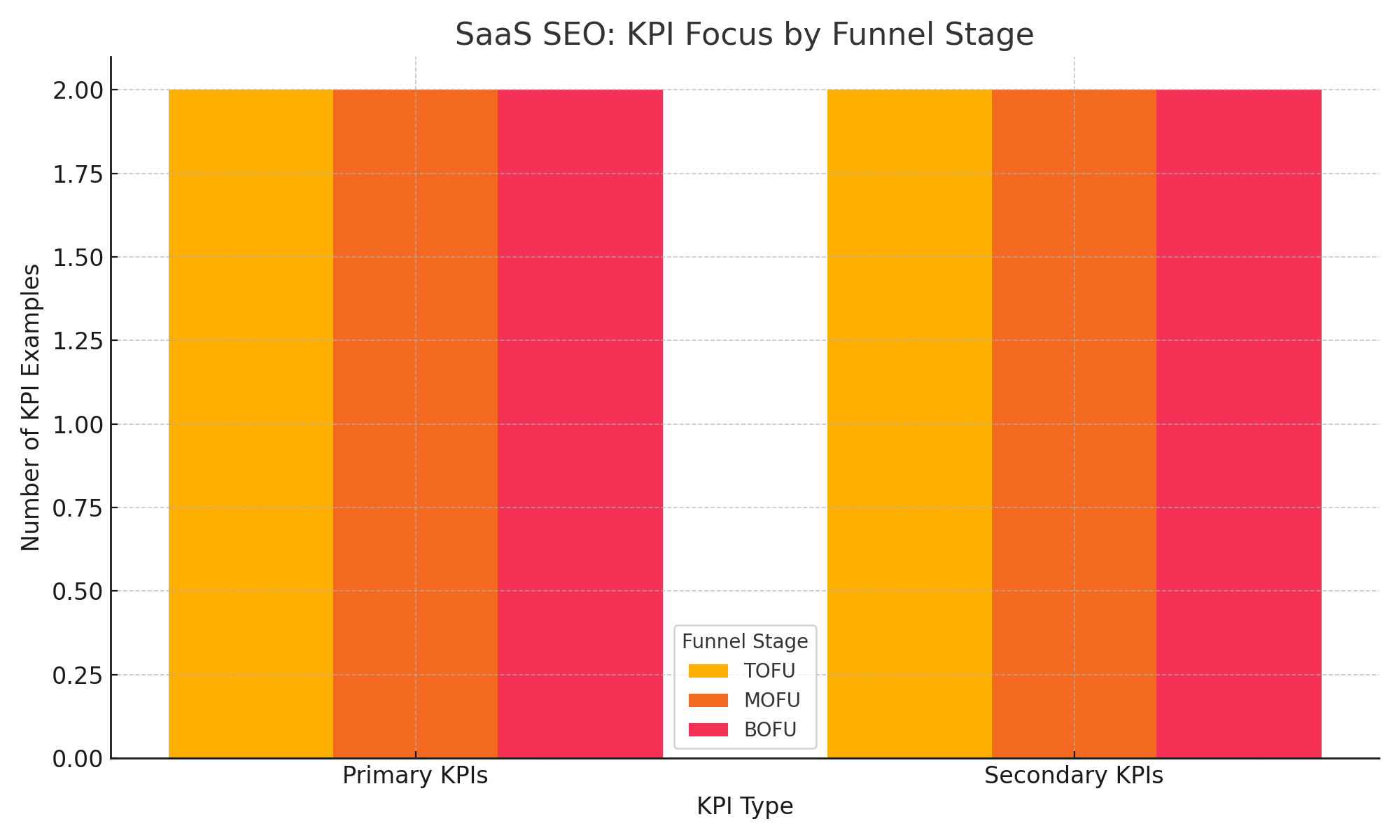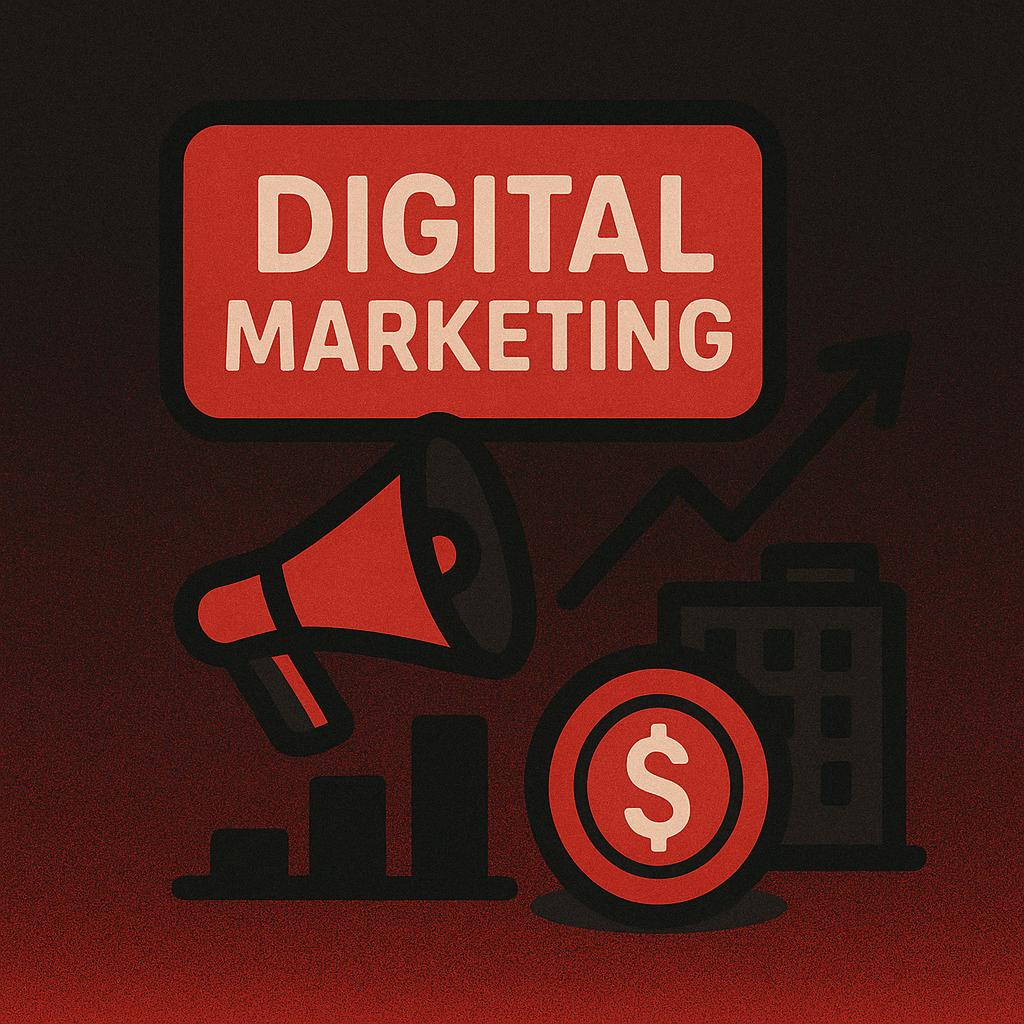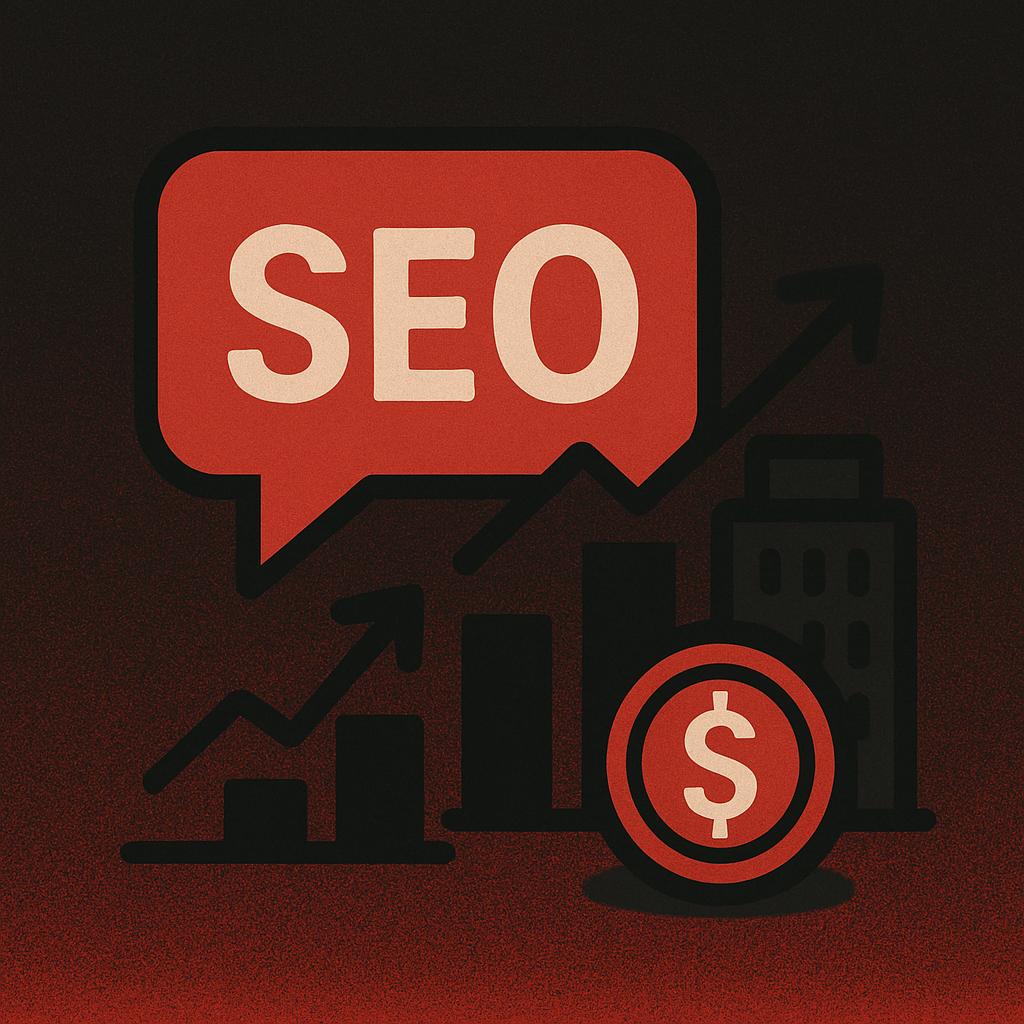What Is SaaS SEO?
SaaS SEO is the process of improving a SaaS company’s visibility in search engines to drive organic growth. It’s not just about rankings — it’s about attracting qualified leads who are ready to engage with your product. Unlike general SEO, SaaS SEO focuses on long-term customer acquisition through strategic content, technical optimization, and keyword mapping across the entire funnel.
This type of SEO is deeply tied to the SaaS business model, where recurring revenue and user retention are critical. To be effective, the strategy must go beyond traffic metrics and support product-led growth, lead nurturing, and scalable demand generation.
SaaS SEO vs Traditional SEO: Key Differences
The main difference between SaaS SEO and traditional SEO lies in the customer journey. In SaaS, users typically move through a multi-step buying process — from problem awareness to evaluation to purchase. SEO for SaaS must align with this journey, targeting each stage with tailored content.
Traditional SEO often centers around high-volume, low-intent keywords. But a strong saas seo strategy focuses on intent-rich keywords that match user needs at specific funnel stages. SaaS content must not only rank — it must convert and retain.
Another key distinction is in the type of content. SaaS SEO relies heavily on product-led content, comparison pages, integration guides, and solution-based articles. Traditional SEO may lean more on general blog posts or transactional pages.
Why SEO Is Crucial for SaaS Companies
For SaaS companies, SEO is one of the most scalable and cost-effective growth channels. Paid ads become expensive and less efficient over time, while SEO compounds. A well-executed seo strategy for saas can generate consistent leads without ongoing ad spend.
SEO also supports user education. Prospects researching features, use cases, or alternatives often start with search engines. By being visible in those moments, your SaaS brand builds trust early in the decision process.
Furthermore, organic search is often the most trusted channel for B2B buyers. Investing in b2b saas seo can position your company as an authority and reduce reliance on outbound sales or costly performance marketing.
How the SaaS Business Model Impacts SEO
The SaaS model is subscription-based, which means revenue depends on retention and lifetime value. This creates unique SEO requirements: the goal isn’t just traffic, it’s long-term user engagement.
SEO content must not only attract — it must educate, convert, and support post-signup success. For example, knowledge base content can reduce churn, while integration pages improve onboarding. That’s why saas marketing seo must work hand-in-hand with product, support, and customer success teams.
Finally, the SaaS sales cycle is typically longer and involves multiple stakeholders. This means your seo for saas approach should include content for different buyer personas — from decision-makers to technical users — each searching with different intent.
SEO for SaaS: Why It Matters in 2025
In 2025, the SaaS landscape is more competitive than ever. With rising customer acquisition costs and saturated paid channels, SEO for SaaS has become one of the most sustainable, scalable, and cost-effective growth levers. A well-structured saas seo strategy allows companies to capture high-intent traffic, build long-term authority, and reduce dependency on ads — all while supporting the entire customer lifecycle.
Benefits of SEO for SaaS Businesses
The benefits of seo for saas go far beyond traffic. Unlike paid campaigns that stop delivering the moment budgets run out, organic search builds long-term momentum. High-quality, evergreen content continues to attract users months or even years after publication.
SEO also increases visibility among decision-makers actively searching for solutions. When your brand appears across various relevant queries — from feature comparisons to industry-specific pain points — it gains authority and trust. This is especially powerful for B2B SaaS, where trust is a key driver of purchase decisions.
Additionally, an effective b2b saas seo plan ensures that your product shows up at every critical stage of the buyer journey. This means more engagement, better brand recall, and ultimately, more conversions.
Lowering Customer Acquisition Costs Through SEO
One of the biggest advantages of saas seo is its ability to reduce CAC (Customer Acquisition Cost). Paid media channels are becoming increasingly expensive, and returns often decline over time. SEO, on the other hand, has a compounding effect: the more content you publish and rank, the more qualified leads you attract — without paying for every click.
A targeted seo strategy for saas focuses on ranking for keywords with high commercial intent. These are the queries typed by users who are actively evaluating or seeking SaaS solutions. Capturing this traffic early reduces the need for retargeting and shortens the sales cycle, further lowering overall acquisition costs.
Driving Scalable and Sustainable Growth
SaaS businesses need predictable, scalable growth models — and SEO delivers just that. Once foundational content and technical elements are in place, traffic can scale without scaling spend. You don’t need to double your budget to double your reach.
What makes saas marketing seo particularly powerful is its alignment with recurring revenue models. Every organic lead has the potential to become a long-term customer, contributing to monthly recurring revenue (MRR) over time. It’s a channel that grows with the business and becomes more efficient as your domain authority increases.
Improving Lead Quality and Conversion Rates
Not all leads are created equal — and seo for saas has the unique advantage of bringing in leads with strong intent. People who search for niche queries like “best CRM for SaaS startups” or “alternatives to [competitor]” are far more likely to convert than those who click on a broad display ad.
Moreover, high-intent content pre-qualifies prospects. When users consume detailed comparison pages, feature breakdowns, or technical use cases, they already understand your value proposition. This means sales teams spend less time educating and more time closing. Better-fit leads result in higher conversion rates, lower churn, and more efficient revenue generation.
SaaS SEO Strategy: Core Elements of an Effective Plan
An effective saas seo strategy is built on structure, precision, and alignment with business goals. It’s not enough to publish blog posts and hope for rankings. To generate predictable growth, SaaS companies must define what success looks like, how to measure it, and how to guide prospects through every stage of the funnel.
Setting Goals and KPIs for SaaS SEO
The first step in building a strong seo strategy for saas is defining clear, measurable goals. These should go beyond simple traffic metrics and connect directly to business outcomes like qualified leads, trial signups, or revenue contribution.
Common KPIs in a saas seo strategy include organic traffic growth, keyword rankings for high-intent queries, demo requests, and conversion rates from organic sessions. It’s also critical to track SEO-influenced pipeline and customer acquisition cost over time.
SaaS businesses benefit most when SEO performance is tied to lifecycle stages. For example, track TOFU content by engagement and BOFU content by conversions. This ensures that every piece of content serves a strategic purpose and contributes to overall growth.
Let’s break down the key KPIs by funnel stage to ensure full-funnel visibility.
| Funnel Stage | Primary KPIs | Secondary KPIs | Tools to Track |
| TOFU | – Organic traffic growth
– Pageviews |
– Time on page
– Bounce rate |
Google Analytics
Google Search Console |
| MOFU | – Click-through rate (CTR)
– Scroll depth |
– Downloads
– Event tracking (e.g. webinar views) |
HubSpot
Hotjar GA4 |
| BOFU | – Trial signups
– Demo requests |
– Conversion rate
– Form completions |
CRM (e.g. Salesforce)
Google Tag Manager |
Suggested Metrics to Track by Funnel Stage
Aligning SEO With the SaaS Marketing Funnel
SEO should never exist in a silo. A successful saas seo strategy is fully integrated into the broader marketing funnel — from awareness to consideration to conversion. Each stage requires different content, formats, and keyword focus.
Top-of-funnel content captures attention with educational material like guides, industry trends, and thought leadership. Middle-of-funnel content nurtures interest through product comparisons, case studies, and solution-driven blog posts. Bottom-of-funnel content drives action with pricing pages, integrations, and landing pages optimized for conversion.
This structured approach ensures that your SEO supports every layer of the buyer journey. When done right, saas marketing seo transforms your website into a self-guided acquisition engine.
Understanding the SaaS Buyer Journey
The SaaS buyer journey is often complex, especially in B2B environments. Buyers typically move through multiple touchpoints before making a decision. They conduct research, compare solutions, consult teams, and evaluate ROI. A successful seo for saas strategy must be built to address each of these steps.
Understanding who your buyers are — and what they search for at each stage — allows you to build content that meets them where they are. Decision-makers may be focused on integrations and pricing, while end users care about usability and features.
SaaS SEO must also account for long sales cycles. Content needs to re-engage users who return multiple times. That means developing resources that build trust, answer specific objections, and push prospects closer to conversion every time they visit.
SaaS SEO Keyword Research: Data-Driven Techniques
At the core of every successful saas seo strategy lies comprehensive, data-driven keyword research. SaaS businesses must target terms that not only bring in traffic, but attract the right users — those with intent to engage, trial, or buy. Effective keyword research aligns with business goals, speaks directly to pain points, and adapts to every stage of the funnel.
How to Find High-Intent SaaS Keywords
High-intent keywords are the fuel of SEO for SaaS. These are terms that indicate a user is actively seeking a solution — not just browsing, but evaluating. To find them, start by analyzing your product’s core value and use cases. Then, explore keyword variations that include words like “best,” “tools,” “software,” “platform,” and “alternative.”
Use tools like Ahrefs, Semrush, and Google Search Console to discover keywords with clear commercial value. Filter by low difficulty and high conversion potential. Prioritize terms with transactional or comparative intent — they often signal a user closer to taking action.
Mapping Keywords to Funnel Stages
Not all keywords serve the same purpose. A smart seo strategy for saas assigns specific terms to each stage of the marketing funnel. This allows you to build content that speaks to users based on their current mindset, increasing relevance and conversion.
Keyword mapping ensures you don’t waste content opportunities. A TOFU keyword won’t convert if used in a BOFU landing page — and vice versa. When keywords are aligned with buyer stages, content performance improves dramatically across the funnel.
| Funnel Stage | User Intent | Example Keywords | Recommended Content Type | Goal |
| TOFU | Awareness – Identifying the problem | “how to reduce churn”
“team collaboration tips” |
Blog posts
Guides Infographics |
Attract relevant traffic and build awareness |
| MOFU | Consideration – Exploring solutions | “best CRM for SaaS”
“SaaS onboarding tools” |
Comparison pages
Case studies Webinars |
Educate and nurture prospects toward engagement |
| BOFU | Decision – Ready to take action | “[Your brand] pricing”
“[Competitor] alternative” |
Product pages
Demo CTAs Landing pages |
Drive conversions, signups, and demos |
Keyword Strategy by Funnel Stage
Top-of-the-Funnel (TOFU) SaaS Keywords
TOFU keywords attract users who are just becoming aware of a problem or exploring a general topic. These are often broad, informational, and educational. Examples include:
- “How to improve team productivity”
- “What is customer onboarding”
- “Top digital marketing trends”
For saas marketing seo, TOFU keywords are crucial for generating awareness and positioning your brand as a trusted educator. They often form the foundation of blog content, guides, and infographics.
Middle-of-the-Funnel (MOFU) SaaS Keywords
MOFU keywords reflect evaluation behavior. At this stage, users are actively researching solutions. Keywords often include phrases like:
- “Best project management software”
- “Top CRM tools for startups”
- “SaaS solutions for remote teams”
This is where comparison pages, case studies, and solution-based content shine. Targeting these keywords helps move prospects closer to decision while showing your product in context.
Bottom-of-the-Funnel (BOFU) SaaS Keywords
BOFU keywords are used by people ready to take action. They search with specific intent and are often looking for pricing, trials, or final validation. Typical terms include:
- “[Your Brand] pricing”
- “[Competitor] alternatives”
- “Buy [SaaS Tool]”
Optimizing product pages, demo CTAs, and integration-specific landing pages with BOFU keywords helps capture high-converting traffic. This is where b2b saas seo delivers the most direct ROI.
Keyword Gap Analysis & Competitor Research
One of the fastest ways to find opportunity is by identifying what your competitors rank for — and you don’t. A keyword gap analysis reveals missing coverage, underperforming topics, and areas for quick wins.
Start by listing direct and indirect competitors. Use tools like Semrush or Ahrefs to compare keyword portfolios. Look for high-intent keywords where their content ranks, but yours is absent or weak. Prioritize those with proven search volume and achievable ranking potential.
This process not only uncovers gaps — it helps reverse-engineer what works in your niche and strengthens your saas seo strategy with data-backed decisions.
Branded Keywords and Pain Point SEO
Branded keywords are a powerful but often overlooked category. Users searching for “[your brand] + reviews” or “[your brand] pricing” are already far along the journey. These pages must be optimized, monitored, and continuously improved.
Pain point SEO targets queries that speak to user frustrations. Instead of targeting general “features,” focus on problems your SaaS solves. For example, “how to reduce churn in SaaS” or “tools to automate onboarding.” These queries align with strong intent and build trust by showing that you understand the customer’s challenges.
Branded and pain-driven keywords not only improve conversion — they position your SaaS as the solution users were actively looking for.
On-Page SEO for SaaS: Best Practices
Strong on-page optimization is the foundation of any successful saas seo strategy. It ensures that your most important content is not only discoverable by search engines but also structured to convert visitors into users. SaaS websites, in particular, must balance technical precision with user experience and clarity.
Optimizing Product and Feature Pages
Product and feature pages often represent the highest-converting assets on a SaaS site. They must be optimized with BOFU keywords, clear messaging, and fast-loading elements. Focus on using specific, benefit-oriented headings, schema markup for reviews or FAQs, and keyword placement in titles, meta descriptions, and H1s.
Content should highlight use cases, integrations, and outcomes — not just features. Including customer quotes, demo CTAs, and internal links to relevant resources improves both SEO and conversion rates. These pages are where seo for saas and CRO (conversion rate optimization) intersect.
Building Topic Clusters and Internal Linking
Topic clusters are essential for building topical authority in competitive SaaS niches. This approach involves creating a central pillar page around a core theme and linking it to multiple supporting articles. For example, a pillar page on “Customer Onboarding Software” can connect to posts about onboarding email templates, best practices, and case studies.
Internal linking strengthens SEO by distributing authority and keeping users engaged. It also helps Google understand your content hierarchy. A solid saas marketing seo structure ensures that link equity flows to high-priority pages while keeping the user journey intuitive and valuable.
Leveraging Product-Led Content for SEO
Product-led content blends education with subtle promotion. Instead of writing generic posts, show how your product solves specific problems. For example, instead of “how to manage remote teams,” create “how [Your Tool] helps remote teams streamline communication.”
This content ranks for relevant keywords while naturally demonstrating value. It’s a powerful tactic in a b2b saas seo strategy because it reduces friction — prospects see the solution in action while consuming helpful, non-promotional content.
Technical SEO for SaaS Websites
Technical seo for saas websites ensures your site is fast, crawlable, and error-free — all crucial factors for search rankings and user experience. As SaaS platforms scale, complexity grows. A proactive technical SEO setup avoids performance drops and missed opportunities.
Crawlability, Indexation, and Site Speed
If search engines can’t crawl or index your pages, they won’t rank. A clean site architecture, proper use of robots.txt and sitemaps, and consistent internal linking make your content discoverable. Avoid duplicate content and use canonical tags when needed.
Site speed is equally important. SaaS users expect performance. Compress images, implement lazy loading, and leverage browser caching to meet Google’s Core Web Vitals benchmarks. Page speed improvements support both SEO and retention.
Addressing Common SaaS Technical SEO Issues
SaaS sites often suffer from issues like dynamic URLs, parameter-heavy pages, or duplicate content from product variations. Use hreflang for multilingual content, and monitor crawl stats regularly to detect problems early.
Many SaaS platforms use subdomains for docs or blogs — be sure those areas are optimized and linked to the main domain. Technical audits should be routine in every seo strategy for saas to prevent ranking losses as the site grows.
Programmatic SEO: Scaling Content Creation
Programmatic SEO allows SaaS companies to generate hundreds or thousands of pages around structured data — such as integration pages, feature comparisons, or industry-specific solutions.
For example, create pages like “[Your SaaS] for healthcare,” “[Your SaaS] vs [Competitor],” or “[Feature] + [Use Case].” These help you rank for long-tail, high-intent keywords at scale. Be cautious: quality must be maintained across all generated pages, with unique value on each.
International SaaS SEO Considerations
Expanding globally? International SEO is key. Use hreflang tags correctly to target the right audience in the right language. Research country-specific keywords — search behavior and terminology can vary widely.
Create dedicated landing pages for each region, not just translated copies. Ensure your SaaS platform supports multi-currency and local compliance. A localized seo for saas approach builds trust and improves rankings in target markets.
Off-Page SEO and Link Building for SaaS
Off-page SEO helps SaaS brands build authority, trust, and visibility beyond their own websites. In competitive verticals, strong backlink profiles are often what separate high-ranking sites from the rest. Off-page strategies must be intentional, scalable, and brand-aligned.
Building Authority with Data-Driven Content
Original research, benchmark reports, and industry surveys are powerful saas seo assets. They attract backlinks from reputable sources and establish your brand as a thought leader. Data-driven content is often referenced by journalists, bloggers, and influencers — expanding your reach and domain authority.
Publishing unique insights, statistics, or frameworks positions your SaaS brand as an expert. This strengthens not only rankings, but also brand perception and PR opportunities.
Acquiring High-Quality Backlinks
Not all backlinks are equal. Focus on links from relevant, high-authority sites in your industry. Tactics include guest posting, partnerships, podcast appearances, and co-marketing campaigns.
Avoid manipulative link schemes — they can do more harm than good. In a solid b2b saas seo strategy, link building should be earned through credibility, content, and relationship building.
Using Free Tools and Resources to Attract Links
Offering free tools, templates, and calculators can naturally generate links over time. For example, a “Churn Rate Calculator” or “Freemium Revenue Forecast Template” adds real value and encourages sharing.
These assets not only support SEO but also drive engagement, brand awareness, and top-of-funnel lead capture. Free resources are a high-leverage tactic in any saas seo plan aiming for organic visibility and trust.
Creating a Winning SEO Strategy for SaaS: Step-by-Step
Building a winning saas seo strategy is not about quick hacks — it’s about creating a structured, repeatable system for growth. Each step plays a specific role, from discovery to execution to refinement. When executed in the right order, these steps align your marketing, product, and SEO efforts for maximum ROI.
Step 1: Discovery Workshop & Goal Setting
Start with alignment. A discovery workshop brings together stakeholders across marketing, product, and sales to define goals, expectations, and constraints. The purpose is to clarify why SEO matters, what success looks like, and how it connects to the company’s revenue model.
Establish concrete objectives — not just “more traffic,” but measurable business outcomes. A b2b saas seo strategy should tie efforts to qualified leads, sales pipeline, and customer acquisition cost.
Step 2: Competitor & Market Analysis
Next, analyze the competitive landscape. Identify your direct and indirect competitors in search. Look beyond product competitors — include comparison sites, publishers, and aggregators that dominate relevant keywords.
Use tools like Ahrefs or Semrush to study top-performing content, backlink profiles, and keyword overlap. Understand how competitors position themselves and where the gaps lie. This intelligence forms the basis for differentiation in your seo for saas approach.
Step 3: Keyword Research & Prioritization
Effective keyword research is about targeting the right opportunities — not just volume, but intent and fit. Start with your core product features and pain points, then expand into use cases, alternatives, and industry-specific queries.
Prioritize keywords based on business impact, difficulty, and funnel stage. High-intent, BOFU keywords often deliver faster ROI, while TOFU terms build long-term brand visibility. A focused keyword map is the backbone of your entire saas seo strategy.
Step 4: Content Strategy & Execution
With keywords mapped, it’s time to build a content engine. Group keywords into thematic clusters and plan pillar pages supported by in-depth subtopics. This structure builds topical authority and keeps users engaged.
Content must be valuable, actionable, and aligned with the buyer journey. Mix educational posts, product-led content, comparison pages, and integration-specific articles. Don’t just write to rank — write to convert.
Step 5: On-Page Optimization
Every page must be optimized for search engines and users. This includes clean URLs, relevant title tags, strong meta descriptions, and structured H1s. Use your primary keyword early in the page, but keep it natural.
For saas marketing seo, include internal links, CTAs, multimedia, and schema markup where relevant. The goal is to create pages that are fast, clear, and conversion-focused — while still being search-friendly.
Step 6: Technical SEO Fixes
Technical seo for saas is what keeps your foundation solid. Fix crawl errors, duplicate content, broken links, and slow load times. Implement canonical tags, structured data, and ensure proper indexing of all priority pages.
Set up ongoing audits using Google Search Console and third-party tools. As your site grows, so does complexity — stay proactive and catch issues before they impact rankings.
Step 7: Link Building & PR
Earned authority is essential for competitive rankings. Develop a link building strategy based on high-quality outreach, digital PR, and content worth referencing. Build relationships with partners, influencers, and journalists in your industry.
Leverage original data, free tools, or reports to generate backlinks organically. In b2b saas seo, a strong backlink profile often makes the difference between page two and page one.
Step 8: Tracking Performance & KPIs
Set up analytics dashboards to monitor your key SEO KPIs — organic traffic, conversions, keyword rankings, and engagement metrics. Use attribution modeling to understand how SEO contributes across the funnel.
Regular reporting helps you prove ROI and adjust strategy as needed. Make performance tracking part of your weekly or monthly workflow, not a once-a-quarter check-in.

Visual breakdown of KPI focus across funnel stages in SaaS SEO
Step 9: Continuous SEO Growth Loops
SEO is never done. The best saas seo strategies include built-in feedback loops — where insights from performance lead to new content ideas, optimizations, and technical improvements.
Repurpose top-performing content. Expand successful clusters. Fill content gaps. Optimize for emerging keywords. Sustainable SEO success comes from iteration, not perfection. Build a system that learns, adapts, and compounds over time.
B2B SaaS SEO: Tactics That Work
For B2B SaaS companies, organic search plays a crucial role in attracting high-value leads. The sales cycles are longer, the buying committees larger, and the need for trust deeper. A tailored b2b saas seo strategy must account for these complexities by combining education, authority building, and precision targeting.
Differences Between B2B and B2C SaaS SEO
B2C SaaS SEO often focuses on volume — wide appeal, consumer-oriented messaging, and emotional triggers. In contrast, B2B SEO prioritizes specificity and depth. The goal isn’t just traffic; it’s attracting stakeholders, decision-makers, and technical users who demand substance and clarity.
B2B buyers perform extensive research, often visiting multiple resources before conversion. That’s why content must answer detailed questions, provide comparisons, and demonstrate ROI. Keyword targeting leans more toward niche phrases, technical use cases, and industry-specific needs.
Building Authority in Niche B2B Markets
To win in B2B search, you must become the go-to resource in your niche. This starts with producing content that solves real problems — not fluff, but frameworks, templates, and data-backed insights.
Authority also grows through collaboration. Guest posting on respected industry blogs, getting featured in niche newsletters, and speaking on relevant podcasts all contribute to your backlink profile and brand recognition. In saas seo, being cited is as important as being found.
Case Studies from B2B SaaS Leaders (e.g. Adobe, Canva, Smartlook)
Leaders like Adobe and Canva invest heavily in SEO. Adobe ranks for high-volume design and productivity keywords by combining educational content with deep product integration. Canva targets TOFU queries like “social media templates” to bring in users who later convert within the app.
Smartlook uses comparison pages, integration-focused content, and behavioral analytics guides to attract qualified leads. Their saas seo strategy aligns perfectly with user intent — and it shows in their organic growth.
SaaS Marketing SEO: Integrating Channels for Maximum Impact
SEO works best when it doesn’t operate in isolation. The most effective saas marketing seo strategies connect organic search with paid, product, and content efforts to maximize ROI and user impact.
How SEO Supports Paid and Content Marketing
SEO provides a foundation for your paid strategy. By identifying high-performing organic keywords, you can reduce CPC and improve ad relevance. Paid search can also help test keyword intent before committing to organic content.
Your SEO content should feed content marketing calendars, email sequences, and social media campaigns. Repurposing evergreen blog posts into webinars, infographics, or lead magnets extends their reach across all channels.
SEO and Product Marketing Synergy
Product marketers can use SEO insights to shape messaging and prioritize feature development. High-traffic queries often highlight user needs, which can inform positioning.
At the same time, product-led content — like tutorials, onboarding guides, and use cases — strengthens saas seo performance. When SEO aligns with the product story, the user journey becomes seamless from search to signup.
Using SEO Data to Inform Marketing Strategy
SEO is one of the richest sources of intent data. By analyzing what users search before converting, you gain deep insight into their motivations and objections. This data helps refine ICPs, prioritize campaigns, and uncover emerging trends.
Using SEO to guide overall marketing strategy makes your messaging more relevant, your targeting more accurate, and your growth more predictable.
FAQs: Common SaaS SEO Questions Answered
Can I link across topic clusters?
Should I update old SaaS blog posts?
How do I optimize images for SEO?
Conclusion: Building a Long-Term SaaS SEO Advantage
SaaS SEO is not just a channel — it’s a growth engine. When executed with clarity, strategy, and consistency, it drives compounding returns across the funnel. From high-intent keywords to technical infrastructure, every element of your saas seo strategy contributes to long-term momentum.
Unlike paid ads, which stop when budgets do, organic search builds trust, attracts ideal customers, and supports scale without burnout. Whether you’re an early-stage startup or an enterprise platform, investing in SEO today positions your SaaS business for sustainable success tomorrow.
The competition is fierce — but with the right strategy, your SaaS company can dominate search and win the market.
What SaaS SEO Success Looks Like: Real Results from Fortunatos Clients
🟢 +112% Trial Signups from BOFU SEO pages
🔵 280% Organic Traffic Growth in 6 months
🟡 3,000+ Backlinks Earned from product-led content
✅ Case Study #1: +112% Growth in Trial Signups with BOFU SEO Pages
Client: B2B SaaS in HR Tech (anonymous)
What we did:
After conducting a full-funnel SEO audit, we identified a critical gap at the bottom of the funnel. The client lacked high-intent pages targeting keywords like “pricing,” “alternatives,” and “[competitor] vs [client].”
We launched a new BOFU content cluster, optimized for transactional queries, and added contextual CTAs on each page.
Results in 90 days:
- +112% increase in free trial signups from organic traffic
- -38% drop in customer acquisition cost (CAC)
- Top 3 rankings for 7 BOFU keywords
✅ Case Study #2: 280% Organic Traffic Growth for a SaaS Startup in 6 Months
Client: Early-stage SaaS in analytics space
What we did:
We built their SEO from scratch — including keyword research, technical optimization, and a TOFU/MOFU-driven content plan. Our focus: publish high-quality, intent-driven blog content and build topical authority with internal linking and strategic backlinks.
Results:
- +280% organic traffic growth
- Domain Rating (DR) jumped from 11 → 42
- 40+ keywords on page 1 of Google
- 8 content pieces went viral on Reddit & LinkedIn
✅ Case Study #3: 3,000+ Backlinks via Product-Led Content & Free Tools
Client: Mid-market SaaS in productivity niche
What we did:
We created and promoted several free tools, including calculators, templates, and integration guides — all aligned with high-volume search intent. Our link building team ran an outreach campaign targeting blogs, review sites, and communities.
Results over 12 months:
- 3,100+ earned backlinks
- Featured in TechCrunch, G2, and Zapier blog
- Organic traffic became the #1 acquisition channel
- MRR increased 4.7x — 70% driven by organic

 Amazon Marketing
Amazon Marketing


